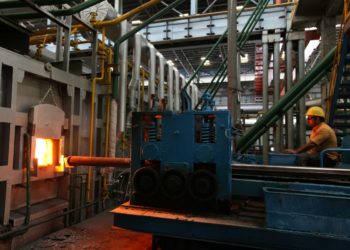In recent years, the automotive industry has faced mounting pressure to reduce vehicle emissions and adhere to stricter environmental regulations. One of the technologies employed to meet these standards is AdBlue, a diesel exhaust fluid (DEF) that significantly cuts down nitrogen oxide (NOx) emissions. However, a growing number of vehicle owners and industry experts are discussing the implications and methods of AdBlue removal. This article delves into what AdBlue is, why some might consider its removal, and the potential consequences of tampering with this crucial system.
What is AdBlue?
AdBlue is a high-purity urea solution designed to reduce harmful emissions from diesel engines. It is injected into the exhaust stream, where it reacts with nitrogen oxides to form harmless nitrogen and water vapor. This process occurs in the Selective Catalytic Reduction (SCR) system of modern diesel vehicles. By breaking down NOx emissions, AdBlue helps vehicles meet stringent Euro 6 emission standards and other global regulations aimed at minimizing air pollution.
Reasons for AdBlue Removal
Despite its environmental benefits, some vehicle owners and fleet managers consider removing AdBlue systems for various reasons:
1.Cost Concerns: The cost of AdBlue can add up, especially for high-mileage vehicles or large fleets. The price of AdBlue itself and the potential maintenance costs associated with the SCR system can be significant.
2.Operational Issues: Some users report operational issues with the SCR system, such as frequent malfunctions or system errors, which can disrupt vehicle performance and lead to costly repairs.
3.Performance Perception: There are claims that removing the AdBlue system may improve engine performance or fuel efficiency. However, these claims are often controversial and not supported by substantial evidence.
The Risks of AdBlue Removal
Removing the AdBlue system from a vehicle is a serious decision with several potential risks and legal implications:
1.Legal Consequences: Tampering with or removing emission control systems, including AdBlue, is illegal in many regions. Regulatory bodies, such as the Environmental Protection Agency (EPA) in the United States or the European Environmental Agency (EEA), enforce strict emissions standards. Violation of these regulations can result in hefty fines, vehicle impoundment, or even legal action against the vehicle owner or fleet operator.
2.Increased Emissions: Without AdBlue, a vehicle’s emissions will exceed legal limits, contributing to higher levels of NOx and other pollutants. This not only harms the environment but also affects air quality and public health.
3.Vehicle Warranty and Reliability: Removing the AdBlue system can void vehicle warranties, leading to potential financial liabilities for repairs. Additionally, tampering with emission systems can cause engine performance issues and long-term reliability problems.
4.Inspection and Compliance Issues: Vehicles with removed or modified emission systems may fail mandatory emissions inspections. This can result in the inability to legally operate the vehicle on public roads, affecting both personal and commercial use.
Alternatives to AdBlue Removal
Rather than removing the AdBlue system, consider exploring the following alternatives:
1.Regular Maintenance: Proper maintenance of the SCR system can prevent many of the issues associated with AdBlue. Regular checks and prompt repairs can ensure that the system functions correctly, minimizing the risk of malfunctions and reducing overall costs.
2.Alternative Fuels: Some diesel vehicle owners are turning to alternative fuels or hybrid systems that reduce reliance on AdBlue. Researching and investing in cleaner technologies can provide long-term benefits both environmentally and economically.
3.Upgraded Systems: If AdBlue-related issues persist, consider upgrading to newer models or systems that offer improved reliability and performance. Advances in technology may offer solutions that better meet your needs while staying compliant with regulations.
Conclusion
AdBlue plays a crucial role in reducing diesel engine emissions and helping vehicles comply with stringent environmental standards. While the temptation to remove or bypass the AdBlue system may arise due to cost, performance, or operational issues, the risks and legal implications far outweigh any potential benefits.
Adhering to emissions regulations not only ensures legal compliance but also contributes to a healthier environment and better public health. For those experiencing issues with their AdBlue systems, seeking professional advice and exploring maintenance or upgrade options is a more prudent approach than removal.
By understanding the importance of AdBlue and considering the broader impact of tampering with emission systems, vehicle owners and fleet managers can make informed decisions that align with both regulatory requirements and environmental stewardship.














































































